 At The Emperor's Emporium, carpets are made from hand spun wool and coloured with vegetable dyes. Materials for the various dyes are often bought by the pound and hand delivered to Maharajah Ranjit Singh at his tent. I have therefore spent Day 73 making baskets in various sizes and weaves using the technique at Miniatures & maisons de poupées, the link that Mercedes had provided so that these flowers/plants/material can be collected.
At The Emperor's Emporium, carpets are made from hand spun wool and coloured with vegetable dyes. Materials for the various dyes are often bought by the pound and hand delivered to Maharajah Ranjit Singh at his tent. I have therefore spent Day 73 making baskets in various sizes and weaves using the technique at Miniatures & maisons de poupées, the link that Mercedes had provided so that these flowers/plants/material can be collected. I used various material, namely, paper twine (good), raffia strings (lousy), hemp strings (great) and cuisine cotton strings (my favourite). I was lucky to have found "wires" used to tie presents at Daiso yesterday. For a pack of about 100 at S$2, mine came in bamboo and craft pattern.
I used various material, namely, paper twine (good), raffia strings (lousy), hemp strings (great) and cuisine cotton strings (my favourite). I was lucky to have found "wires" used to tie presents at Daiso yesterday. For a pack of about 100 at S$2, mine came in bamboo and craft pattern.I found out that once you made your 1st basket following as best as you can the instructions at Miniatures & maisons de poupées, you can let your hands do the talking with the rest. For me, I didn't want fine and pretty baskets but those that are used in plantations. Making the baskets were fairly easy although I still took 7-8 hours. I also modified some of my "materials" to make them resemble the actual flowers. Unfortunately, they are not quite to scale and will require a bit of your imagination.
Here are my various baskets and the plants for some of the common dyes used for carpets and other purposes in India:
INDIGO
(Indigo Fera)

 Indigo is one of the 3 most commonly used colour for carpets.
Indigo is one of the 3 most commonly used colour for carpets.  It can be derived from a variety of plants but the one that extracts the most indigo is Indigofera. That variety of indigo is in fact domesticated in India, believed to be the oldest center of indigo dyeing in the Old World. Do you know that is how the word "Indigo" is derived? The association of India with indigo is reflected in the Greek word for the dye, indikón (ινδικόν, indian).
It can be derived from a variety of plants but the one that extracts the most indigo is Indigofera. That variety of indigo is in fact domesticated in India, believed to be the oldest center of indigo dyeing in the Old World. Do you know that is how the word "Indigo" is derived? The association of India with indigo is reflected in the Greek word for the dye, indikón (ινδικόν, indian).MADDER
(Rubia Tinctorum)
(Rubia Tinctorum)

 Once again, India claims the credit for being the
Once again, India claims the credit for being the  1st civilisation to use this dye as a piece of cotton dyed with madder has been recovered from the archaeological site at Mohenjo-daro (3rd millenium BC). Madder is derived from boiling the roots of this plant. Early dyers "animalise" the dye by adding blood, dung, and urine in the dyeing process to achieve Turkey Red, a highly valued rich, deep, brilliant red dye for yarns and fabric. It was also known to be extremely colorfast.
1st civilisation to use this dye as a piece of cotton dyed with madder has been recovered from the archaeological site at Mohenjo-daro (3rd millenium BC). Madder is derived from boiling the roots of this plant. Early dyers "animalise" the dye by adding blood, dung, and urine in the dyeing process to achieve Turkey Red, a highly valued rich, deep, brilliant red dye for yarns and fabric. It was also known to be extremely colorfast.LARKSPUR
(Delphinium Sulpureum)
(Delphinium Sulpureum)


 Larkspur is the most common source for moderately clear gold or yellow-gold colour and our 3rd most common dye used for rugs. It is derived from boiling all parts of the plants. The plant is poisonous and if eaten, will cause vomiting and in large enough doses, even death. This plant is therefore popular for more notorious reasons with my harem girls, in particular over a certain brand of hookahs. Larkspur is also the flower for the month of July and denotes fickleness.
Larkspur is the most common source for moderately clear gold or yellow-gold colour and our 3rd most common dye used for rugs. It is derived from boiling all parts of the plants. The plant is poisonous and if eaten, will cause vomiting and in large enough doses, even death. This plant is therefore popular for more notorious reasons with my harem girls, in particular over a certain brand of hookahs. Larkspur is also the flower for the month of July and denotes fickleness.DRAGON'S BLOOD
(Daemonorop or Croton)
(Daemonorop or Croton)


 Dragon's Blood- A blood red resin primarily used for creating red varnishes, commonly used for Indian furniture. From a variety of plants, mainly
Dragon's Blood- A blood red resin primarily used for creating red varnishes, commonly used for Indian furniture. From a variety of plants, mainly  Daemonorop Draco (left) and Croton bonplandianus (right), the small, round fruits are dried, then shaken in a basket, through which the resin falls; it is collected on a cloth damped in hot water, and pressed into moulds. The prized dragon's blood called the "Singapore Lump" sells for about £27 per cwt.
Daemonorop Draco (left) and Croton bonplandianus (right), the small, round fruits are dried, then shaken in a basket, through which the resin falls; it is collected on a cloth damped in hot water, and pressed into moulds. The prized dragon's blood called the "Singapore Lump" sells for about £27 per cwt. HENNA
(Lawsonia Inermis)


 Often cultivated in hedges and as a dye plant, especially in India, Persia and Egypt, the small oval leaves are powdered and made into a paste to give the Henna dye. The lawsone in the paste migrates into the outermost layer of the skin and makes a red-brown stain. The bloom emits a sweet and seductive scent reminiscent of jasmine, rose, and mignonette and have been used as a perfume for many centuries. That's why both the blooms and the leaves are in great demand at the Emporium. Indian henna leaves now quoted in London at 45s. per cwt.
Often cultivated in hedges and as a dye plant, especially in India, Persia and Egypt, the small oval leaves are powdered and made into a paste to give the Henna dye. The lawsone in the paste migrates into the outermost layer of the skin and makes a red-brown stain. The bloom emits a sweet and seductive scent reminiscent of jasmine, rose, and mignonette and have been used as a perfume for many centuries. That's why both the blooms and the leaves are in great demand at the Emporium. Indian henna leaves now quoted in London at 45s. per cwt.
BLACK CUTCH
(Acacia Catechu)

 This is a thorny tree valued for its wood used in making furniture in India. The black gum-resin known as
This is a thorny tree valued for its wood used in making furniture in India. The black gum-resin known as  Cutch or Catechu is obtained by boiling chips of the heart-wood, of this tree. The dye produces brown colour. This tree is very versatile as an edible form of cutch ,commonly used in India for chewing with "betel" leaf , and a valuable gum, resembling gum arabic, is also obtained from the tree. Wood from this tree is also one of the best for charcoal.
Cutch or Catechu is obtained by boiling chips of the heart-wood, of this tree. The dye produces brown colour. This tree is very versatile as an edible form of cutch ,commonly used in India for chewing with "betel" leaf , and a valuable gum, resembling gum arabic, is also obtained from the tree. Wood from this tree is also one of the best for charcoal.
(Lawsonia Inermis)


 Often cultivated in hedges and as a dye plant, especially in India, Persia and Egypt, the small oval leaves are powdered and made into a paste to give the Henna dye. The lawsone in the paste migrates into the outermost layer of the skin and makes a red-brown stain. The bloom emits a sweet and seductive scent reminiscent of jasmine, rose, and mignonette and have been used as a perfume for many centuries. That's why both the blooms and the leaves are in great demand at the Emporium. Indian henna leaves now quoted in London at 45s. per cwt.
Often cultivated in hedges and as a dye plant, especially in India, Persia and Egypt, the small oval leaves are powdered and made into a paste to give the Henna dye. The lawsone in the paste migrates into the outermost layer of the skin and makes a red-brown stain. The bloom emits a sweet and seductive scent reminiscent of jasmine, rose, and mignonette and have been used as a perfume for many centuries. That's why both the blooms and the leaves are in great demand at the Emporium. Indian henna leaves now quoted in London at 45s. per cwt. BLACK CUTCH
(Acacia Catechu)

 This is a thorny tree valued for its wood used in making furniture in India. The black gum-resin known as
This is a thorny tree valued for its wood used in making furniture in India. The black gum-resin known as  Cutch or Catechu is obtained by boiling chips of the heart-wood, of this tree. The dye produces brown colour. This tree is very versatile as an edible form of cutch ,commonly used in India for chewing with "betel" leaf , and a valuable gum, resembling gum arabic, is also obtained from the tree. Wood from this tree is also one of the best for charcoal.
Cutch or Catechu is obtained by boiling chips of the heart-wood, of this tree. The dye produces brown colour. This tree is very versatile as an edible form of cutch ,commonly used in India for chewing with "betel" leaf , and a valuable gum, resembling gum arabic, is also obtained from the tree. Wood from this tree is also one of the best for charcoal.SAFFRON
(Saffran Crocus)


 Ranked the most expensive spice by weight, Saffron is used not only in food, but also as a fabric dye and perfume. Kashmir is one of the few countries that produces saffron and it is reputed that Kashmiri Saffron cost at least 70% more than its Persian (Iran) counterpart due to its exceptional fragrance. There's a long line for the product, as the greater part goes first to the Subcontinent, Kashmir having supplied India with top quality saffron since the time of the Mughals. This all adds to the accumulating wealth of our dear Kashmiri Girl who of course grows an abundance of saffran crocus amidst her tulips.
Ranked the most expensive spice by weight, Saffron is used not only in food, but also as a fabric dye and perfume. Kashmir is one of the few countries that produces saffron and it is reputed that Kashmiri Saffron cost at least 70% more than its Persian (Iran) counterpart due to its exceptional fragrance. There's a long line for the product, as the greater part goes first to the Subcontinent, Kashmir having supplied India with top quality saffron since the time of the Mughals. This all adds to the accumulating wealth of our dear Kashmiri Girl who of course grows an abundance of saffran crocus amidst her tulips.


 Ranked the most expensive spice by weight, Saffron is used not only in food, but also as a fabric dye and perfume. Kashmir is one of the few countries that produces saffron and it is reputed that Kashmiri Saffron cost at least 70% more than its Persian (Iran) counterpart due to its exceptional fragrance. There's a long line for the product, as the greater part goes first to the Subcontinent, Kashmir having supplied India with top quality saffron since the time of the Mughals. This all adds to the accumulating wealth of our dear Kashmiri Girl who of course grows an abundance of saffran crocus amidst her tulips.
Ranked the most expensive spice by weight, Saffron is used not only in food, but also as a fabric dye and perfume. Kashmir is one of the few countries that produces saffron and it is reputed that Kashmiri Saffron cost at least 70% more than its Persian (Iran) counterpart due to its exceptional fragrance. There's a long line for the product, as the greater part goes first to the Subcontinent, Kashmir having supplied India with top quality saffron since the time of the Mughals. This all adds to the accumulating wealth of our dear Kashmiri Girl who of course grows an abundance of saffran crocus amidst her tulips.Tumeric
(Curcuma Longa)

 Sangli, in Southern India is the largest and
Sangli, in Southern India is the largest and  most important trading centre for tumeric in the entire world. Tumeric, known as India Saffron in medieval Europe, was used by those who could not afford the real thing. Like it's price, it serves poorly as a dye as it is not lightfast . It is however commonly used for saris for its regal hue. Tumeric paste stunts facial hair and is used by many Indian women for that purpose. It is also applied to bride and groom before marriage in some places of India, where it is believed that turmeric gives glow to skin and keeps some harmful bacteria away from the body.
most important trading centre for tumeric in the entire world. Tumeric, known as India Saffron in medieval Europe, was used by those who could not afford the real thing. Like it's price, it serves poorly as a dye as it is not lightfast . It is however commonly used for saris for its regal hue. Tumeric paste stunts facial hair and is used by many Indian women for that purpose. It is also applied to bride and groom before marriage in some places of India, where it is believed that turmeric gives glow to skin and keeps some harmful bacteria away from the body.And last but definitely not least, PALACE BLUES
(Blue Gardenia)

 The Blue Gardenia commonly known as Palace Blue
The Blue Gardenia commonly known as Palace Blue s are prized for the strong sweet scent of their flowers and is extremely rare and difficult to grow. The flower is used as a unique dye for expensive saris and exclusive carpets for the few and far between. Each ounce of dye is said to cost at least 100 gold bars because "Palace Blue" as the hue is known can be produced only from these blooms. For details of where the blooms are grown, click here.
s are prized for the strong sweet scent of their flowers and is extremely rare and difficult to grow. The flower is used as a unique dye for expensive saris and exclusive carpets for the few and far between. Each ounce of dye is said to cost at least 100 gold bars because "Palace Blue" as the hue is known can be produced only from these blooms. For details of where the blooms are grown, click here.
(Blue Gardenia)

 The Blue Gardenia commonly known as Palace Blue
The Blue Gardenia commonly known as Palace Blue s are prized for the strong sweet scent of their flowers and is extremely rare and difficult to grow. The flower is used as a unique dye for expensive saris and exclusive carpets for the few and far between. Each ounce of dye is said to cost at least 100 gold bars because "Palace Blue" as the hue is known can be produced only from these blooms. For details of where the blooms are grown, click here.
s are prized for the strong sweet scent of their flowers and is extremely rare and difficult to grow. The flower is used as a unique dye for expensive saris and exclusive carpets for the few and far between. Each ounce of dye is said to cost at least 100 gold bars because "Palace Blue" as the hue is known can be produced only from these blooms. For details of where the blooms are grown, click here.Far prettier than all the flowers or the baskets, are their bearers, as we see them making their way towards The Emperor's Emporium.
 Strolling in a line and looking picture perfect even after a hard day's work at the field, they are a happy lot for they expect a handsome reward. Alas, the Evil Maharajah has something else in mind for their pretty hands and will not pay his dues until...
Strolling in a line and looking picture perfect even after a hard day's work at the field, they are a happy lot for they expect a handsome reward. Alas, the Evil Maharajah has something else in mind for their pretty hands and will not pay his dues until... each and every one of them have hand spun and used up all the dyes from the flowers that they have brought.
each and every one of them have hand spun and used up all the dyes from the flowers that they have brought.O dear, I fear our poor Kashmiri Girl is going to be stuck at the tent for a long long long time....

































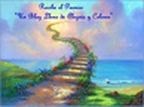























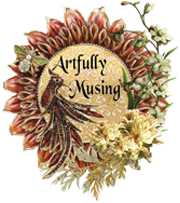

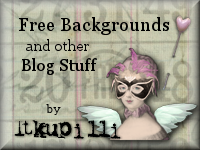










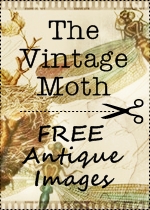


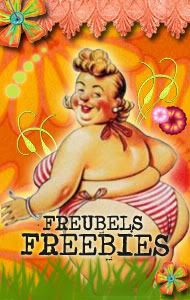









































































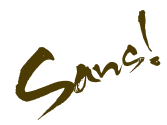

16 comments:
You and your stories! :P
Hugs,
Sumaiya.
ans, you are great. I enjoied your story through the world of herbes and colours. You have been brave working up to 8 hours at weaving, I did one and it was enough. Hugs
Wow!1 I am shocked! You have done the real hrbs!1 Amazing and wonderful!
Wonderful story once more Sans! I love all the information you have dug up! Especially about the origin of the word indigo! (Got my husband interested too)
And the baskets look so great! I'm also impressed about your almost 8 hours of weaving!
By the way, I think you will like my newest acquisition, I thought of you when I bought it:)
I so love how I always leave your site more knowledgeable than when I came. You've done a beautiful job with the photography (I could use some tips!) and the layout of this entry. Love all your baskets, too!
Hey Sumaiya, story!! I beg your pardon! I dare say most of this post are facts !:)..hehe. I know what you mean though and I did stretch it with Blue Gardenia, which is after all your flower as I have dedicated that to you.Anyway, all that I have written about the other dyes are facts with the obvious exceptions, i.e. references to my girls. Do you know there is even a colour called "Palace Blue"? I thought I had invented it until I googled to see if I can find a palette. Lo and behold !!! Sigh, it is near impossible to be an inventor these days ;(.
Oh Rosanna, I have seen your borsine! They are exquisite. Mine are just rough plantation pieces and should be way easier. Why do I take so long for every thing? And the mess I create over this ..my goodness, at one point, I was using my mouse over a table full of soil as I had been making the little flowers..lol!
Eva, thank you, thank you for noticing my little efforts. Yes, I tried making my flowers look like the real thing. They were all varied in material, from plastic to paper to clay and some are pot pourri or dried flowers. I have immense respect for miniaturists specialising in flowers and plants. It is one mean feat to master.
Dear Sans, well done with the basket making, it is worth all the effort I am sure you will agree. There's just something great about little tiny baskets!
Mercedes
Helene, do say hi to your hubby for me and tell him I always appreciate people reading my posts :) and that I thank him. I took 8 hours with the baskets but I think it took me longer to finish the flowers + photoshoot + my research..lol! I love doing it though as much as I love making the minis. I saw your gazebo and you are wrong about me liking it..I LOVE IT!! And of course you have given me another idea. Thank you!
Belle, so many things I find out only after I decide to do a post ..lol. But there are always some interesting titbits about whatever under the sun and because India is such a vast country, almost anything, almost, has something to do with it, even shoes LOL! I have seen your photography and see no problems at all. I take many many shots and picked the best. Sometimes my story changes because of a better picture, often the picture determines what my post is about, lol. I need a separate hard disk just to store all the pics. The other thing is I don't have a fixed setting like a house so sometimes I let my imagination run wild depending on what I want to feature or where my story heads. Lastly, after many many shots, I used Sony Cybershot, I discover the function- Background and Subject bright and experimented with that. All the pics in this post used that function! My friend FaiZ is shocked at my ignorance. LOL
Mercedes, I will never stop making baskets, they are in all household, every culture and no matter what time frame. Amazing thing is that they haven't changed very much even after centuries. You bet your bottom dollar its gratifying :)
The baskets and flowers are beautiful!! And as always I enjoyed the history and explanation!!! Your blog is always a treat! hugs -ara
It is looking wonderful Sans...you have more patience than me with baskets..I won't even try them :-)
Your flowers are fab...you'll be making foxgloves and bonsais next:-)
Ara, I am glad you enjoyed the post and calling it a "treat" just made my day. Thank you :).
Oh Jayne, they are real easy and will look so good with some of your irreplaceable flowers. Now, Bonsai and foxgloves are things I won't even try lol, I think..nope, I will definitely not try foxgloves! I was ignorant then when I first thought I could follow your "tutorial" lol. Those flowers I put up here are mere modifications of existing ones.
Easy...erm Ok....look complex to me :-)
I don't' suggest anyone tried foxgloves lol...I won't do them again :-)
Bonsai are easier...I finished my latest by the way...it's on my blog.
Jayne! I am rushing over to see Bonsai..but before that, may I have some of that Toe Hibiscus you have cultivated?
Toe hibiscus...lol.
Post a Comment